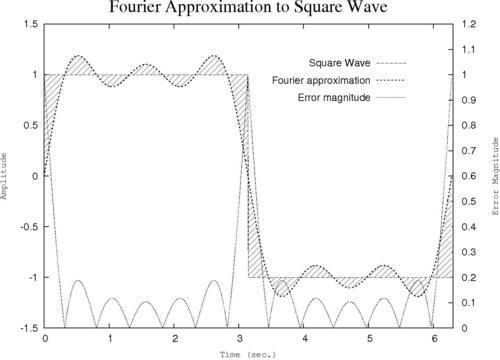The legend refers to the block of information printed on the graph (or occasionally outside it) that explains which curve or symbol is associated with which quantity. It is called a key in gnuplot. A legend or some device that conveys the equivalent information is essential when the graph displays more than one curve.
You've probably noticed that all of our example graphs already contain a key; this is done by gnuplot by default. This recipe will show you how to take complete control of your graph's legend.

Following is a gnuplot script showing the extra commands that produce the legend in the previous plot:
set term postscript landscape
set yrange [-1.5:1.5]
set xrange [0:6.3]
set ytics nomirror
set y2tics 0,.1
set y2range [0:1.2]
set style fill pattern 5
set key at graph .9, .9 spacing 3 font "Helvetica, 14"
set xlabel "Time (sec.) font "Courier, 12"
set ylabel "Amplitude" font "Courier, 12"
set y2label "Error Magnitude" font "Courier, 12"
set title "Fourier Approximation...


